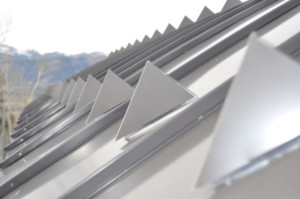Time To Start Your Project: How To Get The Easiest Snow Guard Installation
You have done your measurements, and you have ordered the right amount of guards for your particular project, which means it is time to get to work installing your guards. Proper installation is not hard, but you need to take your time and pay attention to your work to make sure that things run smoothly. These simple steps in the installation process will help you get the job done right the first time.
Take Time To Clean
First and foremost, you have to take some time to clean the area where you are going to put your snow guards. Using isopropyl alcohol will get rid of the dirt and grime that interfere with the adhesives ability to set properly, and will make a much better seal between the guard and the roof. You will want to use a soft, clean rag to do the cleaning and you will probably need to change rags every three or four guards so you do not just move dirt from one spot to another.
Apply Adhesive Liberally
Adhesives are cheap, but guards are not, and neither is the damage that is caused when snow and ice fall into your yard or on your family. Be sure that every square inch of the bottom of the guards are covered with the adhesive that you are using, even if that means using a gloved hand to spread the glue. If there is a lot of extra glue on the bottom of the guard, do not worry; that glue will come in handy later on.
Press, Do Not Set
Once the glue is on the guard, make sure that you press the guard in place, and do not just set it down on the roof. Pressing the guard down helps the glue to make a better seal, by destroying air pockets under the guard, and it will also force some of the excess glue out around the sides of the guard. You will be using this extra glue to make a seal around the base of the guard that is water tight.
Take Your Time
Finally, the easiest way to do this job is to take your time. The installation should take a few hours, and trying to save fifteen minutes by hurrying through the process is not worth the risk. Completing the job will bring a great sense of pride in a job well done, and you should be able to save a lot of money in the process. If you are concerned that you are not doing the job correctly, look for any number of installation guides online for your brand and style of guard.



